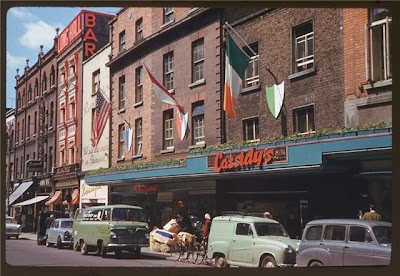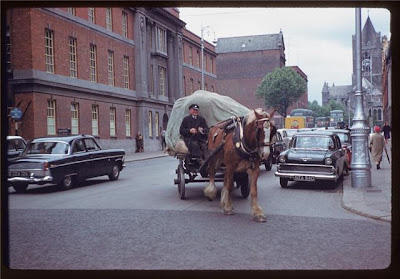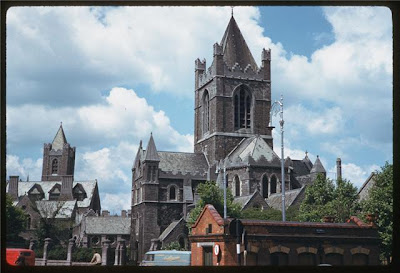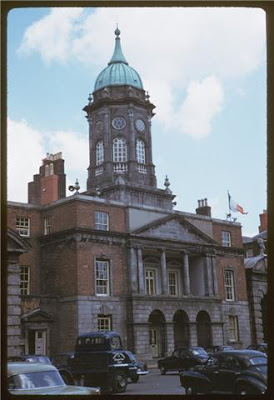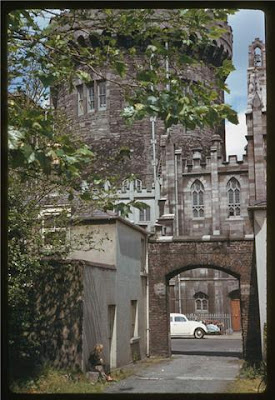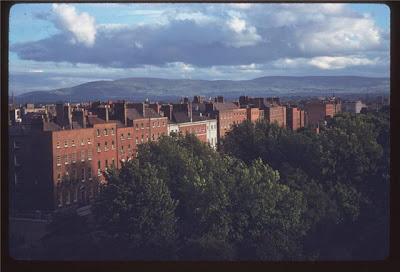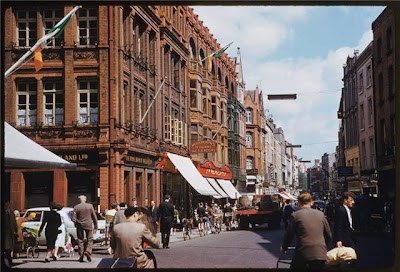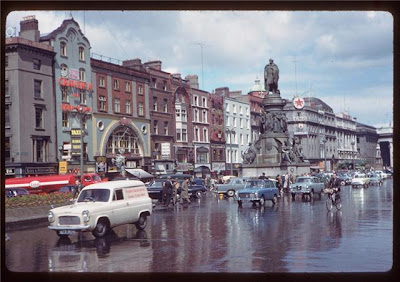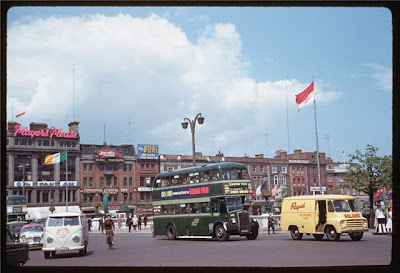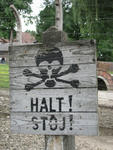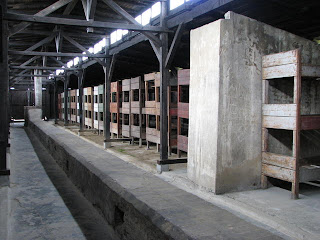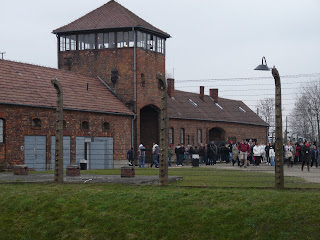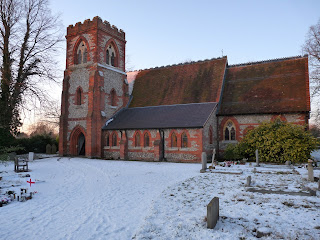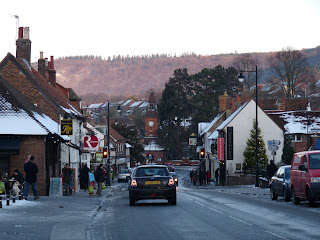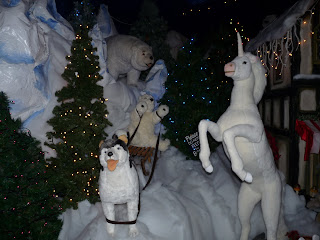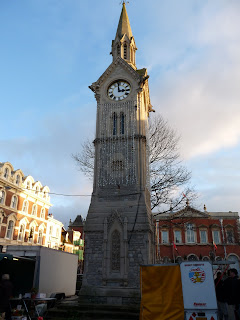
Coming up to the 25th December many decry that the “message” of Christmas has been lost. However, just how Christian is this date? There is no certainty that Jesus of Nazareth was born around this date and indeed the date was already important for other reasons beforehand being both the Feast of Saturnalia and having been proclaimed as the feast of the Sun God. In many cultures the Winter Solstice provided a way point for the rebirth of the Sun and for a devotional systems based on the Sun God. The New Testament gives no date or year for Jesus’ birth. The earliest gospel – St. Mark’s, written about 65 CE – begins with the baptism of an adult Jesus. This suggests that the earliest Christians lacked interest in or knowledge of Jesus’ birth date. Furthermore the 25th December is only celebrated as Xmas by the Western Churches – the eastern and Orthodox Churches mostly celebrate it on the 6th January.
An enigmatic Roman festival, Saturnalia was held at midwinter in honour of the god Saturn. Many of its elements survive in modern Christmas celebrations. Before the 4th century, December 25th was best known as the birthday of the Persian hero and sun-god, Mithras. Mithraism arose in the Mediterranean world at the same time as Christianity imported from Persia.
“Since earliest history, the Sun has been celebrated with rituals by many cultures when it began it's journey into dominance after it's apparent weakness during winter. The origin of these rites, Mithrasists believe, is this proclamation at the dawn of human history by Mithras commanding His followers to observe such rites on that day to celebrate the birth of Mithras, the Invincible Sun.” Temple of Saturn in the Forum of Rome
Temple of Saturn in the Forum of RomeThe cult of Mithras spread all over the Roman Empire. In 274 AD, the Roman emperor Valerian declared December 25th the Birthday of Sol Invictus, the Unconquerable Sun God.
There is a long tradition of the Christian Church taking other’s iconography and calling it their own! They even took the History of the Jewish People and called it the Old Testament. They took over the Basilicas of the Cult of Mithras which, like Christianity, had at its centre redemption through blood sacrifice. When they took over the Roman Basilicas after Constantine the Great made it the state religion of the Roman Empire they replaced the statues of Jupiter with those of Christos (The anointed one – a title used by the Pharaohs of Egypt as in Ptolemy VI Eucharistos on the Rosetta stone) and changed the inscription from “J.O.M.” (Jovis Omnia Maximus) to “D.O.M.” (Deo Omnia Maximus). They even kept the gold disc behind Jupiter which represented his position as the Sun God (Helios) and depicted their images with the “Halo” as a sign of sanctity.

So the Nazarenes have some form in this area, indeed after celebrating the birth of Jesus of Nazareth in early summer for the first 400 years or so they then purloined the Roman Feast of Saturnalia on the 25th December near to the Winter solstice which was associated with feasting and merriment. Clement of Alexandria (d. 215 AD) recorded that some Christians of the time placed his birth date in April (see Stromata I:21). Hippolytus (d. 236 AD) may have believed that Jesus was born on April 2nd.
In pagan Rome, the celebration of the Winter Solstice began on December 17 with the feast of Saturn - also called the Saturnalia. Through December 23rd, the Roman world engaged in merrymaking and the exchanging of gifts in honour of father sun and mother earth. The Saturnalia festival has an astronomical character, referring to the completion of the sun’s yearly course, and the commencement of a new cycle. Saturn represented by the sun at its lowest aspect at the winter solstice. The earth is cold, most plants are dead, and it was believed that the sun might also be approaching death.
Today winter solstice is around December 21, but because of calendar changes, it was originally December 25th. Saturnalia celebrated the sun overcoming the power of winter, with hope of spring when life would be renewed. In Roman times, Bacchus, the god of wine, became the lord of these festivals.
 Planet Saturn
Planet SaturnThe festivities lasted for a week, normal life being suspended in favour of eating, drinking and giving gifts. Of uncertain origins, Saturnalia continued to be celebrated beyond the Christian era, finally bequeathing many of its elements to the Christmas celebrations of today.
Saturn featured very strongly in Roman religion as the harvest god, responsible for sowing, seed and most things agriculture. His festival, Saturnalia, was a time of much merriment and became the most celebrated of Roman festivals as tools were downed, slaves granted temporary freedom and 'certain moral restrictions were eased', and for all their seriousness in battle the Romans sure knew how to ease a moral restriction when they chose to. It was such a success that we are still feeling its partying power to this day. Saturnalia was originally celebrated on December 17th, but became a week long celebration and paved the way for our festivities at Christmas and New Year.
Saturnalia became one of the most popular Roman festivals. It was marked by crazy antics and reversal of social roles, in which slaves and masters ostensibly switched places. The Saturnalia was a large and important public festival in Rome. In time, it became one of the most popular Roman festivals. It involved the conventional sacrifices, a couch (lectisternium) set out in front of the temple of Saturn and the untying of the ropes that bound the statue of Saturn during the rest of the year. Besides the public rites there were a series of holidays and customs celebrated privately. The celebrations included a school holiday, the making and giving of small presents (saturnalia et sigillaricia) and a special market (sigillaria). Gambling was allowed for all, even slaves; however, although it was officially condoned only during this period, one should not assume that it was rare or much remarked upon during the rest of the year.
 Saturnus - God of Agriculture
Saturnus - God of AgricultureIt was a time to eat, drink, and be merry. It was license within careful boundaries; it reversed the social order without subverting it. It was also an opportunity for men to be completely free with their fellowmen, sometimes evolving into homosexual and sometimes also pedophilic relations. The toga was not worn, but rather the synthesis, i.e. colourful, informal "dinner clothes"; and the pileus (freedman's hat) was worn by everyone. Slaves were exempt from punishment, and treated their masters with disrespect. A Saturnalicius princeps was elected master of ceremonies for the proceedings.
"Masters participated in the Saturnalia’s festivals to show their appreciation for the slaves’ service which led them to realize that by treating slaves with respect and care it was in their best interest, as well as those of the slaves (Nardo 26)". In simpler terms, both slaves and masters were supposed to be thankful for each other and enjoyed peaceful time together. Saturn is of course today remembered in modern times in two main ways. Firstly the planet which in astronomical terms is impressive, the second largest in the solar system and girded by its famous rings. It also comes with as much religion and mythology as you could ask for. Secondly, Saturn also lent his name to a day of the week, 'Saturday', from 'Saturni dies' in Latin.
Saturnalia continued to be celebrated into the Christian era. The Chronicle of 354 A.D., a commentary on life in Rome at that time used a figure celebrating Saturnalia as the emblem for December.
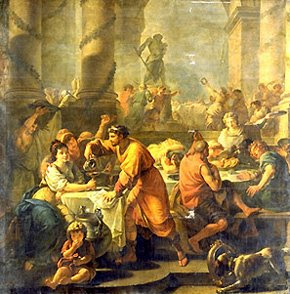
Yet even when it had ceased to be explicitly celebrated, traces of Saturnalia’s festivities still remained. At the Feast of Fools, held on the 1st January in medieval France it was common for high and low officials to exchanging place during festivities. And today, we find the traditions of gift giving, candle lighting and merry making still survive in the celebrations of Christmas.
So if you decide to celebrate this ancient feast, remember to greet your friends with lusty shouts of "io, Saturnalia!" — Io (pronounced "yo") being a Latin interjection related to "ho" (as in "Ho, praise to Saturn"). But if you still wish to say Merry Christmas in Latin it is “Felix Dies Nativitatis.”
For the Celtic Midwinter Festival of Liath see;
http://daithaic.blogspot.com/2010/12/in-darkest-mid-winter.html







